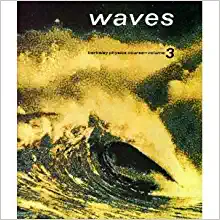Question
Lab 5: Magnetic Fields This week, we'll be exploring the properties of magnets to better understand how magnetic field lines operate in the real world.
Lab 5: Magnetic Fields This week, we'll be exploring the properties of magnets to better understand how magnetic field lines operate in the real world. Equipment: -Field kit (plastic container with metal arrows inside) -Curved red magnet -Bar magnet -Iron filings -Magnetic field meter -Ruler Introduction: Magnet and Compass 1. We'll start by introducing a magnet near a standard compass. Place the magnet on a plain sheet of paper and move the compass all around the magnet (while keeping the compass also on the paper). Based on what you're seeing, what do you think the magnetic field lines produced by the magnet will look like? Sketch a diagram here with the compass held at a single location compared to the magnet. 2. To check your prediction, now bring in the plastic "field" kit, which has little metal arrows embedded between two sheets of plastic. Place the magnet in the middle of the top of the field kit. Line it up to match your sketch above. Were you correct about how the field lines would look? Draw a sketch of this new set-up here.
Part 1: Nature of Magnetic Fields Using a plain piece of paper, set a bar magnet in the center of the paper. 1. Drag the compass around to the bar magnet. Watch the red arrow of the compass needle. What do you notice about the needle as you drag it around the magnet? How is the same or different from our first magnetic? 2. Flip the magnet around and do the same thing. What do you notice about the needle? 3. Now take another piece of paper and place it over the magnet. Pour some iron filings on top of this piece of paper and move them around. What does the field look like around the compass and magnet now? Sketch what's happening. 4. Draw a diagram of this field around the bar magnet below. Place arrows on the field going from North to South.
Part 2: Magnetic Field Strength Now we're going to measure the strength of the magnetic field lines. We'll use our field kit, our bar magnet, a ruler, and the field meter for this section. 1. Place the "+" of the meter close to the South pole as determined by Part 1 and take a reading using the meter, recording that reading in the Distance 1 column of the table below. Measure the distance in cm and record it in the "Distance 1" box. 2. Then drag the "+" from South to North approximately the same distance. Take a reading at four additional points from along the South to North lines, keeping as close to Distance 1 as possible, and place the readings for the magnetic field in the column "Distance 1" in table 1 below: Magnetic Field (G) for 75% Bar Magnet Strength Distance 1 Distance 2 Distance 3 Point 1: South Point 2 Point 3 Point 4 Point 5: North 3. Now do exactly the same thing, except pull the "+" of the Field Meter further away from the South pole and read five points approximately the same distance and place in "Distance 2," recording the distance used in cm. Repeat for a third time, pulling the Field Meter even further out and place at some "Distance 3," recording the distance used in cm again. 4. What can you conclude about magnetic field strength from this experiment?
Part 3: Earth's Magnetic Field For the final part of this week's lab, we're going to use a simulation to explore the magnetic field of Earth. You can find the simulation at: https://phet.colorado.edu/en/simulations/magnet-and-compass/about 1. Select "Show Planet Earth" and "Show Field," turning off the Field Meter but leaving the bar magnet and compass on the screen. What do you notice from your earlier diagram about the magnetic field of a magnet in the lab's introduction and that of the planet Earth on the screen? Sketch a diagram of Earth's magnetic field below. 2. Turn on the Field Meter and drag it around the Earth at different distances. Do this for at least four different distances and record the ? readings here: ?1 = ?2 = ?3 = ?4 = 3. What do you notice about magnetic fields and magnetic field strengths for the Earth?
Reflection Questions: 1. If you are lost in the woods, and you have a compass- would you want to hold it near a magnet as you are trying to find your way? Explain your answer. 2. Does a magnet have to be touching another material to exert a force? Why or why not? 3. The field lines of a magnet move in which direction? 4. As you move away from a magnet, what happens to the magnetic field? 5. If the red on the magnet and compass needle is the North pole, what can we say happens to the needle of the compass as it moves around the magnet?







Step by Step Solution
There are 3 Steps involved in it
Step: 1

Get Instant Access to Expert-Tailored Solutions
See step-by-step solutions with expert insights and AI powered tools for academic success
Step: 2

Step: 3

Ace Your Homework with AI
Get the answers you need in no time with our AI-driven, step-by-step assistance
Get Started


